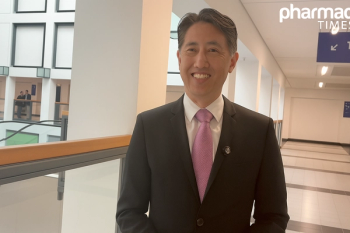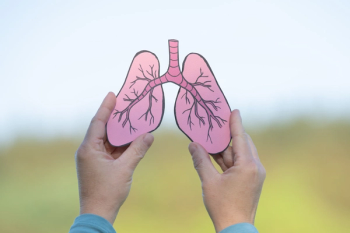
- August 2022
- Volume 88
- Issue 8
SBIRT Spells Cornerstone of Future Pharmacy Practice
Our health care system flunks every available test of public health and population management readiness and response; it is time to call in the cavalry.
The connection between community pharmacy and improving public health is most apparent in our contributions to fighting a pandemic during the past 2 years. Community pharmacies have administered COVID-19 vaccines and diagnostic tests to hundreds of millions of Americans, disproportionally more so than other providers have for patients in rural and underserved areas. Policy leaders have discovered what we in pharmacy already knew: Community pharmacies are not only accessible and trusted but also equipped to provide appropriate screening, protocol-driven interventions, and successful referrals to fill gaps in the health care system.
Introduction to SBIRT
Enter SBIRT (Screening, Brief Intervention, and Referral to Treatment). The SBIRT model is based on the 1990 Institute of Medicine report, “Broadening the Base of Treatment for Alcohol Problems.”1 The connections and potential applications to community pharmacy from that report are fascinating, as they reference the need for community-based screening tools that fill a gap between primary prevention and intensive treatments. SBIRT was developed for alcohol and tobacco use disorders and has been expanded over the years to include illicit and prescription drug use. This is where the Substance Abuse and Mental Health Services Administration stepped in during 2003 to further develop and define SBIRT for Substance Use Disorder (SUD), which included developing evidence through grants and research, additional resources, and reimbursement codes.2 Research suggests that the community pharmacy setting is a feasible location to administer SBIRT for SUD.3
Expanding on SBIRT's Origins to Other Disease States
Undertreated and undiagnosed diseases are a main driver of morbidity and mortality. Nearly a quarter of all diabetes cases (23%) are undiagnosed, and more than 11 million Americans have undiagnosed hypertension, despite having usual care provided by a health care professional.4,5 Nearly two-thirds of cases of depression go undiagnosed, leading to higher aggregate health care costs.6,7 Each of these diseases has fairly easy-to-administer diagnostic protocols via labs (blood glucose and A1c), questionnaire (PHQ 2/9), or vitals (mm Hg). Many diseases are readily diagnosed using standardized protocols with standardized treatment paths.
FDA Paxlovid Action Affirms Need for SBIRT Expansion, Growth
The launch of Paxlovid (nirmatrelvir/ritonavir) has certainly underwhelmed, not for the medication itself but by the health care system’s inability to get patients to seek it through the traditional means of scheduling an appointment with a physician’s office, getting a prescription, and then getting it filled. Initial attempts at “test-to-treat” sites were helpful for individuals in proximity to them but those were limited in availability. The FDA rightly concluded that the best strategy for public health is to let pharmacists prescribe it, as they are the most accessible, convenient, and trusted health care providers in the system.
The FDA requires screening (lab test for COVID-19), allows for brief intervention (prescribing of a short course of Paxlovid under strict protocols and safety checks), and provides guidance on referrals to other health care providers in instances where intervention is either unwarranted or potentially unsafe, for treatment of COVID-19 and conditions preventing the use of Paxlovid.
Catalyzing SBIRT Services Through Multistate Pilot
In 2020, the University of North Carolina (UNC) at Chapel Hill’s Eshelman School of Pharmacy and the National Association for Chain Drug Stores Foundation partnered to launch the Community-based Value-driven Care Initiative. After an extensive review and advice from payers and physician groups, 3 interventions were chosen that fill gaps in care and are feasible to deliver in the community pharmacy setting: behavioral health screenings and comprehensive cardiovascular and diabetes programs. Participating pharmacy organizations were recruited in multiple states, including Iowa, North Carolina, Missouri, Pennsylvania, and Virginia.
The therapeutic interventions are divided into 2 parts. First is a SBIRT process, in which the pharmacist screens the patient and provides a brief intervention based on the results. From there, the patient is referred to the appropriate care provider for treatment. The second part of the intervention involves health education, with the pharmacist educating patients about the treatment plan and helping to manage their medications.
The secret sauce of the project is an opportunity to expand the SBIRT process to chronic conditions in the community pharmacy setting. This is accomplished through an implementation approach to achieve replication, sustainability, and scale-up. To produce consistent results, the UNC implementation framework employs 3 key elements: a usable intervention (eg, SBIRT tool kit), an implementation road map (eg, workflow integration), and the capture of metrics that matter (eg, A1c levels or blood pressure control) to at-risk providers, payers, and pharmacies. Pharmacy organizations are enrolling patients, and the project runs through mid-2023.
What's Next?
Community pharmacies are in an ideal position to bolster the nation’s public health system as we fight this pandemic. This is the next logical step in screening and referring patients for a variety of disease states. Payers and physicians’ organizations need help identifying patients who receive insufficient diagnoses to prevent negative outcomes and excessive costs downstream. Pharmacies can fill this void and will soon have the implementation tools to scale up these interventions.
Follow the progress of the pharmacy networks at the UNC Blog (https://pharmacy.unc.edu/divisions/pace/blog/).
About the Authors
Troy Trygstad, PharmD, PhD, MBA, is the executive director of Community Pharmacy Enhanced Services Network (CPESN) USA, a clinically integrated network of more than 3500 participating pharmacies.
Jon Easter, BPharm, RPh, coauthored this article. He is a professor of the practice at the UNC Eshelman School of Pharmacy at directs the US Healthcare and Health Policy and Managed Care courses and leads the pharmacy practice domain with the global PharmAlliance collaboration. He is also an associate faculty director at the UNC Center for the Business of Health.
References
1. Agerwala SM, McKance-Katz EF. Integrating screening, brief intervention, and referral to treatment (SBIRT) into clinical practice settings: a brief review. J Psychoactive Drugs. 2012;44(4):307-317. doi:10.1080/02791072.2012.720169
2. Screening, brief intervention, and referral to treatment (SBIRT). Substance Abuse and Mental Health Services Administration. Updated June 6, 2022. Accessed July 18, 2022. https://www.samhsa.gov/sbirt
3. Shonesy BC, Williams D, Simmons D, Dorval E, Gitlow S, Gustin RM. Screening, brief intervention, and referral to treatment (SBIRT) in a retail pharmacy setting: the pharmacist’s role in identifying and addressing risk of substance use disorder. J Addict Med. 2019;13(5):403-407. doi:10.1097/ADM.0000000000000525
4. National Diabetes Statistics Report. CDC. Updated January 18, 2022. Accessed July 18, 2022. https://www.cdc.gov/diabetes/data/statistics-report/index.html
5. Ciemins EL, Ritchey MD, Joshi VV, Loustalot F, Hannan J, Cuddeback JK. Application of a tool to identify undiagnosed hypertension - United States, 2016. MMWR Morb Mortal Wkly Rep. 2018;67(29);798-802. doi:10.15585/mmwr.mm6729a2
6. Williams SZ, Chung GS, Muennig PA. Undiagnosed depression: a community diagnosis. SSM Popul Health. 2017;3:633-638. doi:10.1016/j.ssmph.2017.07.012
7. Melek S, Halford M. Measuring the cost of undiagnosed depression. Contingencies. July/August 2012. Accessed July 18, 2022. https://www.milliman.com/-/media/milliman/importedfiles/uploadedfiles/insight/research/health-rr/pdfs/cost-of-undiagnosed-depression.ashx
Articles in this issue
about 3 years ago
Case Studies: August 2022about 3 years ago
Pet Peeves: August 2022about 3 years ago
OTC Case Studies: Vitamins and Supplementsabout 3 years ago
Dartisla ODT From Edenbridge Pharmaceuticalsabout 3 years ago
Cultural Competence Sets Pharmacy Professionals Apartabout 3 years ago
Foot Care Is Essential for Patients With Diabetesabout 3 years ago
Generic Product News: August 2022about 3 years ago
Knowing Which OTC Drugs Patients Are Taking Is Vitalabout 3 years ago
Illinois Business Partners With Hospital to Reduce ReadmissionsNewsletter
Stay informed on drug updates, treatment guidelines, and pharmacy practice trends—subscribe to Pharmacy Times for weekly clinical insights.


















































































































































































































